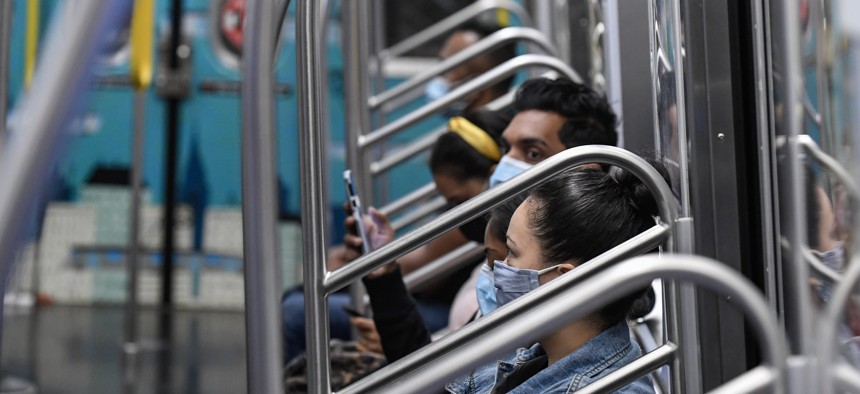A new study published by New York University’s Grossman School of Medicine has revealed what most New Yorkers have already known to be true: the air in the New York City subway system is toxic.
In the study that started before the COVID-19 pandemic began, researchers measured the air quality in 71 different underground subway stations in New York City, Philadelphia, Washington, DC and Boston, during morning and evening rush hours. The samples collected and measured in 10 PATH and three MTA underground subway stations were found to contain two to seven times more “hazardous metals and organic particles” than were detected in air samples collected outside.
One PATH station in particular, the Christopher Street station, contained 77 times more than the normal concentration of “potentially dangerous particles” than above ground city air.
“It was the worst pollution ever measured in a subway station, higher than some of the worst days in Beijing or Delhi,” Dr. Terry Gordon, co-senior study author and professor in the Department of Environmental Medicine at NYU Langone, told the Guardian.
According to the study’s researchers these high concentrations of air pollutants could cause some serious health risks over time. “As riders of one of the busiest, and apparently dirtiest, metro systems in the country, New Yorkers in particular should be concerned about the toxins they are inhaling as they wait for trains to arrive,” Gordon said.
Analysis of the air samples revealed that iron and organic carbon were present in the air samples collected. Organic carbon has been linked to a heightened risk of developing asthma, lung cancer, and heart disease. Gordon also conducted another study in 2014, that revealed that the air in underground subway stations has a higher level of black carbon and particulate matter than outside air. While the study did not identify the cause of the city’s subway air pollution it has plans to investigate the source of pollution in a follow up study.
However, this is far from the first time that researchers have stated that the subway contains a high number of air pollutants.
In 2005, Dr. Steven N. Chillrud, a research professor at Columbia University, published a study measuring the subway’s air quality and the presence of steel dust in the air. Chillrud found that the presence of the metals iron, manganese, and chromium were 100 times greater in the subway than in the outdoor air. While exposure to metal particulates have been associated with negative health effects, Chillrud did not come to any conclusions in his study about the long term effects on workers who spend a lot of time in the subway. The study does conjecture, however, that the presence of steel dust in subways may be the result of subway trains breaking or ongoing construction work in the subways.
The findings of this research, as well as previous research on the subject, have raised serious questions about the impact prolonged exposure to these air pollutants might have on MTA employees who may spend a significant amount of time in underground stations. Tim Minton, a spokesperson for the Metropolitan Transportation Authority said in a prepared statement that past air quality tests performed did not show signs of any health risks but the agency plans to “thoroughly review this study as the safety of customers and employees is always our highest priority.”
“The subways are part of New York City, which is designated by USEPA as an area that includes elevated levels of the same size particulates identified in the NYU study. Notably, study researchers sampled the equivalent of 0.6% of the system – just three of 472 stations and four trains from close to 1,000 that move through NYC Transit every day. The MTA is currently piloting technology solutions, as a result of pandemic-related innovation, that will further enhance filtration in subway cars.”
Correction: An earlier version of this story had the wrong number of MTA stations that were examined in the NYU air quality study.


